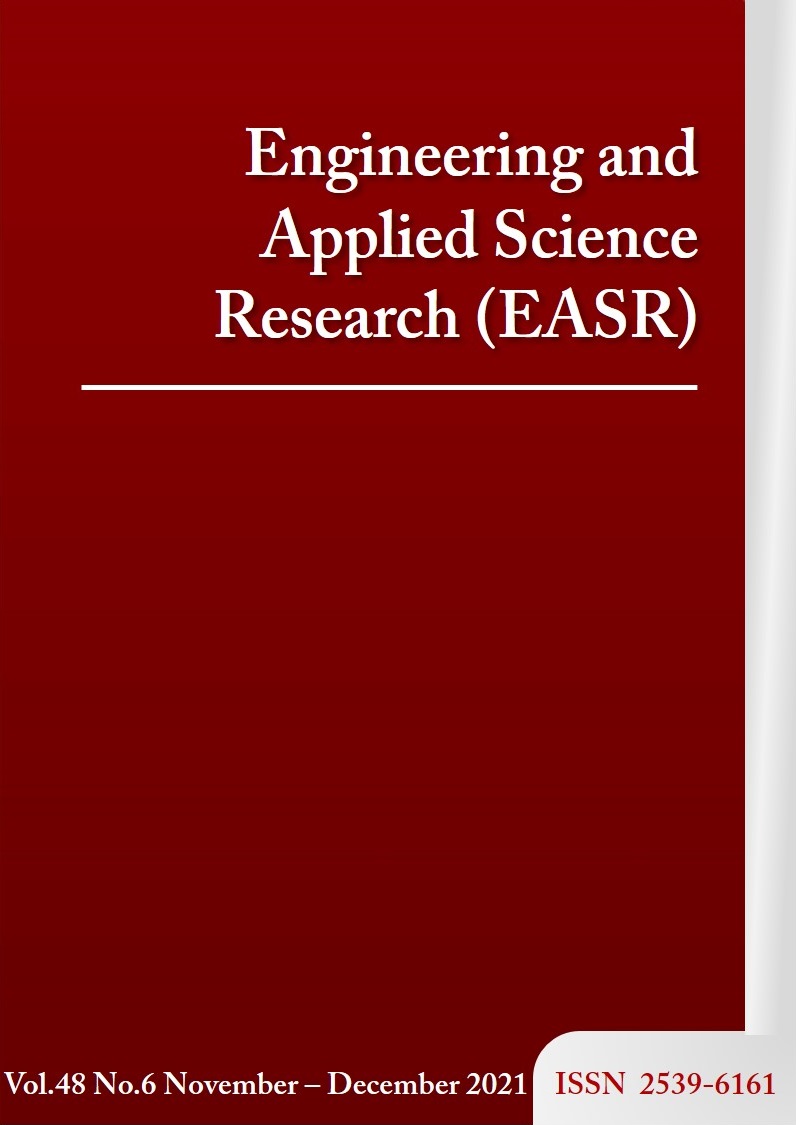Preliminary study of unmodified wax printing using FDM 3D-printer for jewelry
Main Article Content
Abstract
This paper proposes a preliminary study of making wax model from a customized FDM 3D- printer for jewelry application. Using external extrusion speed and heating control together with the XYZ gantry control of the original printer, two types of wax, injection grade and carving and milling wax were extruded through a plunger-cylinder extruder to form some basic shapes and Buddha statues. Flowability of waxes was investigated and the printing objects were observed. It was found that both waxes could be extruded at a temperature lower than their melting points. The modified FDM 3D-printer could produce 3D wax objects but the materials were easily spread outwards during printing. Further study focusing on printing parameters and material properties were required to improve the printing resolution and accuracy.
Article Details
This work is licensed under a Creative Commons Attribution-NonCommercial-NoDerivatives 4.0 International License.
References
[2] Dawound M, Taha I, Ebeid SJ. Strain sensing behaviour of 3D printed carbon black filled ABS. J Manuf Process. 2018;35:337-42.
[3] Ekoi EJ, Dickson AN, Dowling DP. Investigating the fatigue and mechanical behaviour of 3D printed woven and nonwoven continuous carbon fibre reinforced polymer (CFRP) composites. Compos B Eng. 2021;212:108704.
[4] Ehler E, Sterling DA. 3D printed copper-plastic composite material for use as a radiotherapy bolus. Phys Med. 2020;76:202-6.
[5] Kruger J, du Plessis A, van Zijl G. An investigation into the porosity of extrusion-based 3D printed concrete. Addit Manuf. 2021;37:101740.
[6] Ly O, Yorus-Nobile AI, Sebaibi N, Blanco-Fernandez E, Boutouil M, Castro-Fresno D, et al. Optimisation of 3D printed concrete for artificial reefs: Biofouling and mechanical analysis. Construct Build Mater. 2021;272:121649.
[7] Mantihal S, Prakash S, Bhandari B. Textural modification of 3D printed dark chocolate by varying internal infill structure. Food Res Int. 2019;121:648-57.
[8] Shi Y, Zhang M, Bhandari B. Effect of addition of beeswax based oleo gel on 3D printing of potato starch-protein system. Food Structure. 2021;27:100176.
[9] Gremare A, Guduric V, Bareille R, Heroguez V, Latour S, L heureux N, et al. Characterization of printed PLA scaffolds for bone tissue engineering. J Biomed Mater Res. 2018;106(4):887-94.
[10] Shi K, Salvage JP, Maniruzzaman M, Nokhodchi A. Role of release modifiers to modulate drug release from fused deposition modelling (FDM) 3D printed tablets. Int J Pharm. 2021;597:120315.
[11] Hamidi A, Tadesse Y. 3D Printing of very soft elastomer and sacrificial carbohydrate glass/elastomer structures for robotic applications. Mater Des. 2020;187:108324.
[12] Rando R, Ramaioli M. Food 3D printing: effect of heat transfer on print stability of chocolate. J Food Eng. 2021;294:110415.
[13] Paolillo M, Derossi A, van Bommel K, Noort M, Severini C. Rheological properties, dispensing force and printing fidelity of starchy-gels modulated by concentration, temperature and resting time. Food Hydrocoll. 2021;117:106703.
[14] Greguric L. Beauty Just Got Better 10 Best 3D Printers for Jewelry [Internet]. Germany: All3DP; 2020 [cited 2021 Feb 26]. Available from: https://all3dp.com/2/3d-printer-for-jewelry-how-they-work-which-to-choose/.
[15] MakerBot Thingiverse. Service Febula [Internet]. MakerBot Industries; 2017 [updated 2017 Jan 10; cited 2021 Feb 26]. Available from https://www.thingiverse.com/thing:2027496.
[16] Wang L, Zhang M, Bhandari B, Yang C. Investigation on fish surimi gel as promising food material for 3D printing. J Food Eng. 2018;220:101-8.



